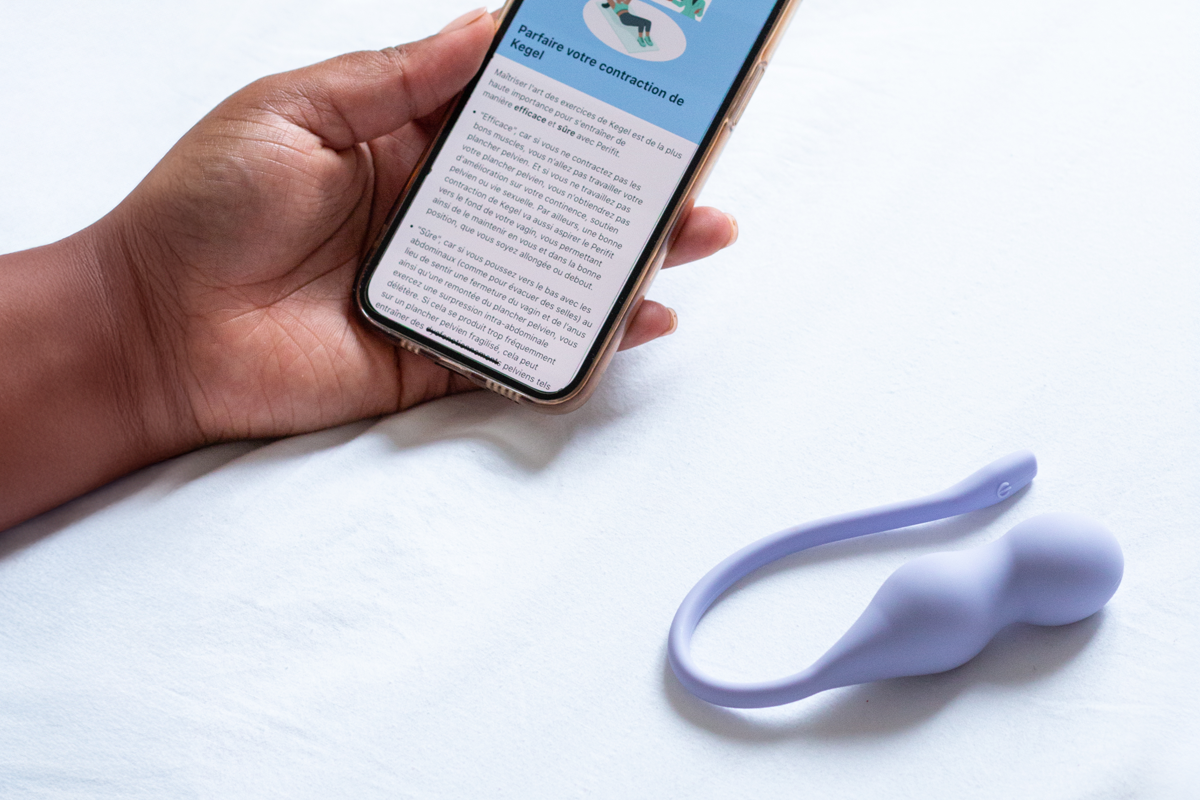Have you ever experienced an unrelenting aching sensation in your pelvic region or tailbone? Pelvic floor dysfunction and tailbone pain are more common than you might think, affecting people of all ages and backgrounds. Whether you're dealing with discomfort during everyday activities, experiencing coccyx pain after sex, or noticing a connection between your pelvic floor and posture, it's time to get to the bottom of things. In this article, we'll explore the causes behind these pesky pains and dive into practical, non-surgical treatments that can help you find relief and get back to living your best life.
What is coccyx pain?
Coccyx pain, also known as tailbone pain or coccydynia, is discomfort felt at the base of your spine where the small triangular bone called the coccyx is located. This common condition can cause a dull ache or sharp pain that worsens when sitting, standing up, or during bowel movements.
Several factors can contribute to pelvic floor and tailbone pain. Common causes include direct trauma from falls, prolonged sitting on hard surfaces, and childbirth. Interestingly, women are five times more likely (1) to experience coccyx pain than men. Other risk factors include obesity, osteoarthritis, and participation in contact sports.
Diagnosis typically involves a physical examination and may include imaging tests to rule out other conditions. Healthcare providers often use X-rays, CT scans, or MRIs to assess coccygeal anatomy and mobility.
Connection between pelvic floor dysfunction and tailbone pain
Did you know that almost 50% of people seeking pelvic floor physical therapy for pelvic pain also experience tailbone pain? (2) This connection between pelvic floor dysfunction and tailbone pain is more common than you might think.
💡 When your pelvic floor muscles are too tight or weak, it can lead to discomfort in your tailbone area.
If you're dealing with pelvic floor dysfunction and tailbone pain, you might notice:
- Pain that worsens when sitting
- Discomfort during or after sex
- Difficulty with bowel movements
- Lower back pain
These symptoms can significantly impact your daily life, but don't worry – there are solutions available.
What are the common causes of pelvic floor and tailbone pain?
Physical trauma and injury
One of the most frequent causes of pelvic floor and tailbone pain is physical trauma. Falls, accidents, or childbirth can lead to bruising, fractures, or dislocations of the coccyx. These injuries can result in persistent discomfort and pain in the tailbone area.
Muscle dysfunction and tension
Damage or dysfunction of the pelvic floor muscles can result in localized discomfort around the tailbone. Overactivity or tension in these muscles, as well as in hip-opening muscles like the piriformis and iliopsoas, can exacerbate tailbone pain symptoms. Poor posture and prolonged sitting can also contribute to muscle tension and pain in this region.
Underlying medical conditions
Certain medical conditions can cause or contribute to pelvic floor and tailbone pain. These may include hemorrhoids, infections, or even rare conditions like chordoma (a spinal tumor). Additionally, degenerative changes in the spine's cartilage can lead to vertebrae rubbing against each other, resulting in tailbone pain.
Exercises to alleviate pelvic floor and tailbone pain
Targeted stretches for relief
If you're experiencing pelvic floor and tailbone pain, certain exercises can help alleviate discomfort.
The single-leg knee hug and figure 4 stretch are excellent for targeting the piriformis and glute muscles. These stretches can help reduce tension in the pelvic area and tailbone region. For those who sit for long periods, try the kneeling hip flexor stretch to loosen tight iliopsoas muscles.
Strengthening your pelvic floor
Incorporating pelvic floor exercises, like Kegels, can improve muscle strength and control. These exercises are particularly beneficial for addressing weak pelvic floor and tailbone pain. Perform these exercises gently and consistently for the best results.
What are the other options to relieve pelvic floor and tailbone pain?
When dealing with pelvic floor and tailbone pain, you have several treatment options to explore. These approaches can help alleviate discomfort and improve your quality of life.
Lifestyle modifications
Simple changes in your daily routine can make a big difference. Consider using a donut-shaped cushion when sitting to relieve pressure on your tailbone. Maintaining good posture and avoiding prolonged sitting can also help manage pelvic floor and tailbone pain.
Alternative therapies
Some people find relief through alternative treatments like acupuncture or massage therapy. These approaches may help relax tense muscles and improve blood flow to the affected area. What works for one person may not work for another, so it's essential to find the right combination of treatments for you.
How long does it take to recover from pelvic floor and tailbone pain?
Healing timeline
Recovery from pelvic floor and tailbone pain varies depending on the cause and severity. For minor injuries, you may feel better within a few weeks. However, more severe cases can take several months to fully heal. Tailbone pain often improves on its own within a few weeks or months.
Factors affecting recovery
Several factors can impact your healing process:
- Severity of the injury
- Overall health and age
- Adherence to treatment plans
- Presence of underlying conditions
💡 While some cases improve after a few weeks, others may persist longer. Pelvic floor dysfunction and tailbone pain often require patience and consistent care for optimal recovery.
Speeding up the process
To support faster healing:
- Use specialized cushions when sitting
- Apply ice or heat to the affected area
- Perform gentle stretches and pelvic floor exercises
- Take over-the-counter pain relievers as directed
Be patient with yourself!
When to consult a therapist for pelvic floor and tailbone pain?
Dealing with pelvic floor and tailbone pain can be challenging, but knowing when to seek professional help is crucial. If your discomfort persists for more than a few weeks or significantly impacts your daily life, it's time to consult a therapist. Tailbone pain typically resolves on its own within a few months. However, if you're experiencing severe pain, loss of sensation, or changes in movement, don't wait to seek help.
Signs it's time to see a specialist:
- Pain interferes with daily activities
- Symptoms worsen despite self-care measures
- You notice changes in bladder or bowel function
- Pain during sexual activity persists
A pelvic floor physical therapist can provide targeted treatments, including trigger point therapy and biofeedback, to address both pelvic floor dysfunction and tailbone pain. Early intervention can lead to faster relief and prevent chronic issues.
Whether it's coccyx pain after sex or general discomfort, there are plenty of ways to find relief. From strengthening those pelvic floor muscles to improving your posture, small changes can make a big difference. Don't be afraid to reach out to a physical therapist or healthcare provider for personalized advice. With the right approach, you can say goodbye to that nagging pain and hello to a more comfortable, active life. Your body will thank you for taking the time to care for your pelvic health!
Sources:





